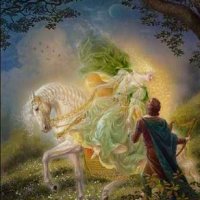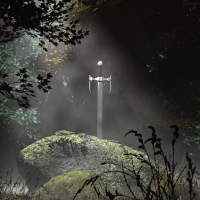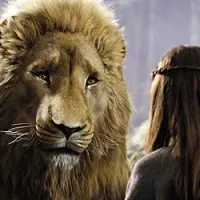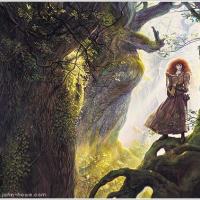Elric, albino prince of ruins, last emperor of the Elder Kingdom of Melniboné, sorcerer, summoner, outcast, wanderer, drug addict and anti-hero, is one of heroic fantasy’s best known and enduring characters. An iconic figure, Elric is distinguished by his albinism and his inhuman, Melnibonéan heritage, both of which serve to make him an outcast in the age of the Younger Kingdoms (a sort of prehistoric alternate Earth). Despite this, Elric is a flawed and very human hero, wracked by guilt over his people’s bloody history and his own vices. Melnibonéans do not consider themselves to be human (they are elf-like, quasi-immortals who dabble in sorcery and worship demons) and as such they have treated the other nations of the world which they have ruled for millenia with great cruelty. Uniquely among his race, Elric possesses something of conscience, and finds it hard to accept many of the traditions which he has been born into – in particular wielding the sentient blade Stormbringer, which drinks the souls of those whom it is used to slay, transferring their vitality to its bearer instead. Due to his frail albino constitution, Elric is particularly vulnerable to the lure of the black sword, for without it he must rely on a cocktail of herbs and drugs to keep him going. This constant struggle and the colourful setting of the Younger Kingdoms provides a fascinating backdrop to Elric’s unusual adventures.
The author of the Elric novels, which first appeared in the 1970s, is Michael Moorcock, a prodigious writer who has written something like 200 novels, novellas and short stories, most of which concern the saga of The Eternal Champion. Moorcock posits the existence of a Multiverse, which consists of several universes, many layered dimensions, spheres, and alternate worlds, in which an eternal struggle between the forces of Law and Chaos takes place. Since the victory of Law or Chaos would cause the Multiverse either to become permanently static or totally formless, the Cosmic Balance enforces certain limits which the powers of Law and Chaos violate at their peril, one of which is The Eternal Champion, a hero who exists in all dimensions, times and worlds, whose role is to intervene when either Law or Chaos have gained an excess of power. There are many different incarnations of The Eternal Champion, all of whom share a number of common features. They are all peerless warriors equipped with deadly weapons like Stormbringer; they each have a romantic interest (in Elric’s case his cousin-bride Cymoril); they are aided by a companion (the ever-faithful Moonglum of Elwher in the Elric novels); and they always have a nemesis (a role which is played by Elric’s would-be usurper Yyrkoon). What unites all of the incarnations of The Eternal Champion in the end is the fact that they are ultimately always doomed to be surrounded by death, strife and destruction, usually brought about somehow by their own actions or the weapons they carry, and to pay the ultimate price for this.
Moorcock’s influences include Joseph Campbells’s Hero with a Thousand Faces (which was also one of George Lucas’s inspirations in creating Star Wars), the Finnish Kalevala and the works of Poul Anderson, to whom the Elric novels are dedicated. Moorcock’s intention in creating Elric in particular was as a sort of reaction to the Conan the Barbarian type of hero that was popular in sword and sorcery novels of the time. He was much more intrigued by the idea of an alienated anti-hero who only gets involved in battles and adventures with great reluctance and when he has no other choice. In this sense Elric can almost be seen as the polar opposite of Conan – he is weak of body, uses sorcery rather than fighting against it, he longs for peace and takes life only with the greatest of reluctance and he is generally plagued with guilt about his own actions and those of his people. His environment in many ways reflects his inner turmoil – his is a world of sleeping dragons, chaos gods, spectral armies and nature in upheaval on every side. Moorcock is a terrific writer who somehow imbues the Elric novels with a mythic resonance to transform something that could quite easily have been a trashy pulp fantasy into a work of art. For example, Elric is described by his creator in the first book, Elric of Melniboné, as follows: “It is the colour of a bleached skull, his flesh; and the long hair which flows below his shoulders is milk-white. From the tapering, beautiful head stare two slanting eyes, crimson and moody, and from the loose sleeves of his yellow gown emerge two slender hands, also the colour of bone”.
I would hugely recommend anyone interested in the sub-genre of heroic fantasy to seek out the Elric novels, which are available in their entirety in two omnibus editions, Elric of Melniboné and Stormbringer. Beyond the novels, Elric has passed into popular consciousness as the hero of song, story, rock show, graphic novel, computer and role-playing game and his adventures can be followed in all these media, as well as the rumoured forthcoming feature film. There are also of course the many other aspects of The Eternal Champion to read about, including Dorian Hawkmoon, Prince Corum and Earl Aubec – a veritable multiverse of heroic adventures, but none of which, for me, quite capture the appeal of the pale-skinned wielder of Stormbringer. Incidentally, a wealth of information about Michael Moorcock and his works is available at http://www.multiverse.org/, which is well worth a visit.

















Great stuff. I tore through all of Moorcock’s Eternal Champion series one year in high school and loved all of their incarnations. Of all the sorcerous, ethereal, psychedelic and fantastical imagery in each of those stories, though, one image made the deepest, longest-lasting impression on me, and it comes back to me fairly often: that of Elric playing his organ, the one whose keys and pedals are attached by wire and blade to the writhing, tortured prisoners somewhere in his castle. Their screams are “tuned” to the various keys, pedals and stops, and I’ve always cringed at that idea and the kind of soul-emptying music such a device would produce.
That’s a powerful image – gives me shudders too!
I’d be very interested if soundscryerMichael (or anyone really) has a reference for which Moorcock book this ‘organ’ appears in because I’m not sure it actually exists. Someone asked about this organ at multiverse.org recently and all we could dig up was in the novel ‘Elric of Melniboné’ there are slaves who have been surgically operated on so they can each only sing a single perfect note and who, collectively, are stimulated to produce the music for Elric’s court. However, Elric – as befits an emperor – doesn’t actually ‘play’ the slaves himself (presumably he has courtiers who do that for him) and Moorcock himself doesn’t describe how the slaves are ‘operated’ – nor does he call them an organ afaik – so it’s left up to the reader’s imagination. One of Moorcock’s skills as a writer is he uses broad brush-stroke descriptions which allow the reader to fill in the ‘gaps’ themselves and I wonder if this is what’s happened here; that soundscryerMichael has ‘remembered’ something (as he describes it) that isn’t actually in the stories? Like I say, if anyone can produce a *textual* reference for the organ – beyond the brief description in chapter 1 of ‘Elric of Melniboné’ – and/or a reference to Elric playing it I would be glad to learn of it because I know someone who would appreciate the answer.
It’s highly possible that over the many years since I enjoyed the Elric tales my memory has mashed that very passage into the image described in my original reply, of an organ or musical instrument that uses human torment to produce its “notes.” I feel sure that “stimulating” the slaves meant further torture, though, which may be why my subconscious turned it into a playable device versus a collection of slaves tortured by others to produce the “sinister music.” Regardless, it’s always been a haunting image, even if a bit (more) warped in memory than the original.
I read the first book years and years ago – might be time to dig it out and reread it, as I might appreciate it more than my eleven-year-old self did!
Yes, I read them at a similar age and still think they’re terrific!